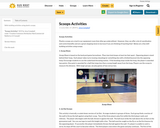
Skills-building activities using plastic scoops.
- Subject:
- Health & Fitness
- Physical Education
- Material Type:
- Activity/Lab
- Date Added:
- 10/15/2019

Skills-building activities using plastic scoops.

With Scratch students will creates stories, games and animations, It will draw students of all types into coding and lay a foundation for future learning.

This is a task from the Illustrative Mathematics website that is one part of a complete illustration of the standard to which it is aligned. Each task has at least one solution and some commentary that addresses important aspects of the task and its potential use.
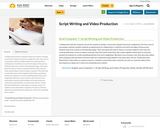
I collaborated with the computer/visual arts teacher to design a social and computer/visual arts assignment. Our focus was to encourage creativity and give students an opportunity for collaboration. Creativity occurred in all stages of the process. Students had to be creative in the planning stages. They were given the task to choose a common children’s fairy tale and come up with ideas on how to make it a parody. They then had to write their own scripts together which takes an immense amount of creativity to create something entirely from one’s imagination. Because it was a humour unit, they were also tasked with coming up with elements of humour both non-verbal and verbal whether it be witty, dark, silly etc. Finally, they then filmed their scripts either on a green screen or a shadow screen which takes creativity not only to create the video but by learning how to adapt one’s vision into something more realistic.
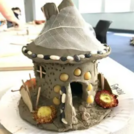
Follow the instructions provided to create air dry clay fairy houses.

Follow these instructions to create animal pinch pots.

In this activity, students create unique clay landscapes to show different geographical features of their environment.
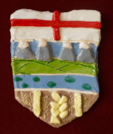
In this activity, students create their provincial crest out of clay.

Check out this source for instructions on how to create crazy pasta sculptures that look like twisty and bendy pieces of art!
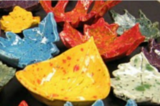
Learn how to make leaf bowls with air drying clay, fired clay, or even salt dough.
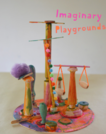
In this lesson, students use wooden parts and pieces to create imaginary playgrounds. This is a great activity for grade 2 and 3 students; if "moving parts" are incorporated, this could also be a great "Kinetic Sculpture" activity for grade 4 Arts Education students.

In this activity, kids get creative by cutting cardboard into various shapes, then stacking it. The final step of pouring paint over their creations is definitely the icing on the cake!
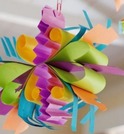
In this fun activity, students experiment with manipulating paper to create different shapes and effects. They also learn about (and practice creating) symmetry!
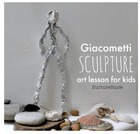
In this art lesson, children learn about the sculptor Alberto Giacometti, then have fun with a quick human figure sketching activity, finally creating foil sculptures of people.
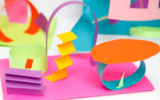
Students create sculptures by manipulating colourful papers.

In this activity, students will learn how radar altimetry is used to measure sea surface height, and determine the direction and speed of ocean surface currents from TOPEX/Poseidon altimetry data. Procedures and materials are provided.

This microtutorial will show you how to find resources using SK curricular outcome.

This tutorial explains how to find resources using our featured collections.

Students embark on a scavenger hunt around the school looking for indoor air pollution and mapping source locations.

Student teams are challenged to evaluate the design of several liquid soaps to answer the question, “Which soap is the best?” Through two simple teacher class demonstrations and the activity investigation, students learn about surface tension and how it is measured, the properties of surfactants (soaps), and how surfactants change the surface properties of liquids. As they evaluate the engineering design of real-world products (different liquid dish washing soap brands), students see the range of design constraints such as cost, reliability, effectiveness and environmental impact. By investigating the critical micelle concentration of various soaps, students determine which requires less volume to be an effective cleaning agent, factors related to both the cost and environmental impact of the surfactant. By investigating the minimum surface tension of the soap, students determine which dissolves dirt and oil most effectively and thus cleans with the least effort. Students evaluate these competing criteria and make their own determination as to which of five liquid soaps make the “best” soap, giving their own evidence and scientific reasoning. They make the connection between gathered data and the real-world experience in using these liquid soaps.